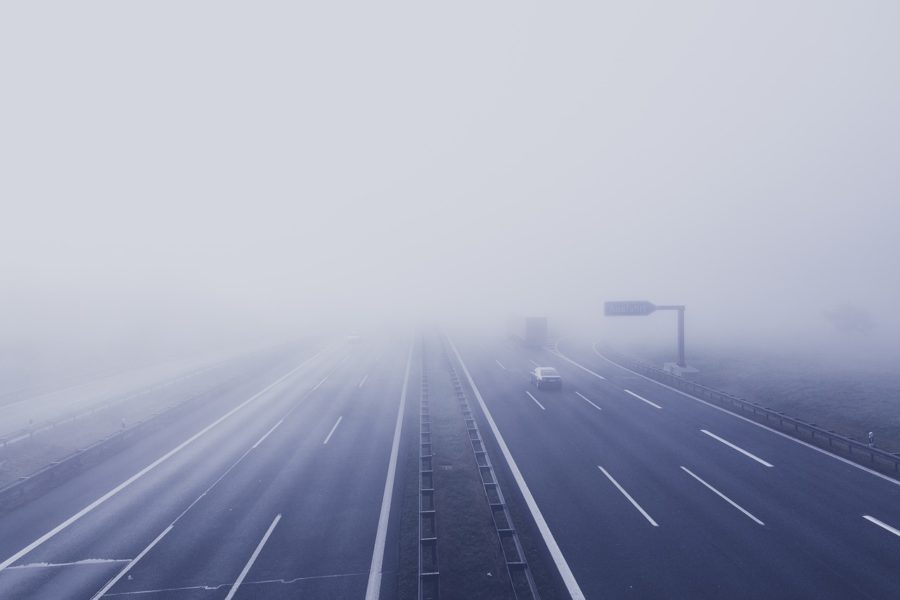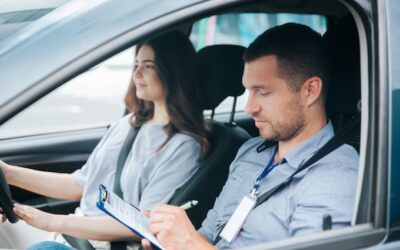Driving in fog can be a harrowing experience even for the most experienced of drivers. For learners and new drivers, it’s important to keep your cool, to take it slowly, and to develop a thorough understanding of the various systems your car has to help you manage.

Driving in Fog – Essential Things to Remember
First of all, there are different types of fog. Meteorologists have identified at least 10 different types of fog, and they’re mainly distinguished by how they’re formed. As a driver, all you have to worry about is the broad distinction between light mist and denser fog.
Light mist won’t affect visibility too much, though it’s important to remain particularly vigilant when things get misty. But when driving in denser fog, visibility can be dangerously low, so it’s vital that you take action.
Fog can be a localised phenomenon. So unless it’s foggy at the start of your journey, you’ll usually be able to see the foggy patch approaching. The first thing you should do is check your mirrors to see if there’s any drivers behind you. Then slow down.
Driving in Fog – Take it Easy
Strangely, some motorists may feel an instinctive need to speed up when driving in fog, most likely because their instinct tells them that they need to get out of the dangerous conditions as soon as possible. Fog can also distort your perception of speed. You may think that the other cars are travelling faster than they really are, which might cause you to subconsciously speed up.
But when visibility is low, driving faster is a terrible idea. Even worse, fog is often accompanied by other adverse weather conditions, such as ice and rain, which will make it harder for you to slow down and stop.
So fight your subconscious and slow down. Fog is responsible for many collisions every year. Don’t be a part of the problem by instinctively speeding up! Remember that speed limits are designed for perfect conditions. When it’s foggy, you must drive slower than usual.
You also need to maintain a greater distance than usual between you and the car in front. Aim for a gap of four seconds instead of two.
Driving in Fog – When to Use Your Fog Lights
Never use your high beams in the fog, even when you’re driving at night. This will simply reflect the fog back at you, reducing your visibility, and your safety, even further.
If visibility is reduced to 100m (roughly the length of a football pitch) use your fog lights.
You can find out more about your fog lights with our detailed guide to when you should use your fog lights.
Driving in Fog Check List
- Check your mirrors and slow down
- Keep your distance between you and the car in front
- Use your windscreen wipers to keep your windows demisted
- If conditions are clear but the word “fog” is shown on a signal, be prepared for foggy patches
- If visibility is reduced to 100m, turn on your fog lights
- Do not use your high beams – even at night
- Do not attempt to navigate using the tail lights of the car in front
- If visibility is very low, wind down your windows at junctions, turns and crossroads to listen for approaching traffic
If conditions are extremely foggy, don’t travel at all unless it’s absolutely necessary.
While learning to drive, your instructor should go through all of this with you. If you are currently learning to drive and are worried about what might happen if you do hit a patch of fog, ask your instructor to talk you through the controls in your next lesson – it’ll only take a couple of minutes and it should make you feel more comfortable.
If you’re learning with a friend or parent, why not ask them to take you through it too? But remember – if you’re driving with a friend or parent as a supervisor make sure you have learner driver insurance.



